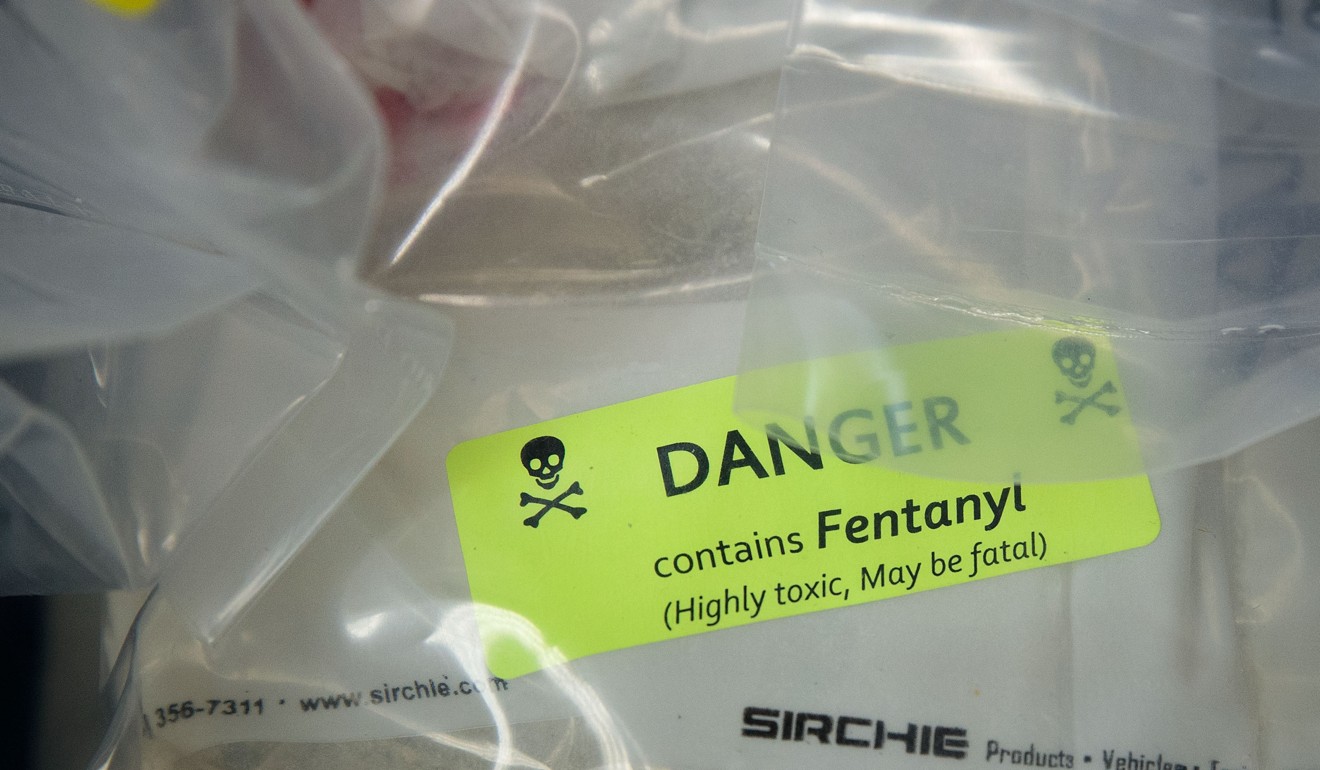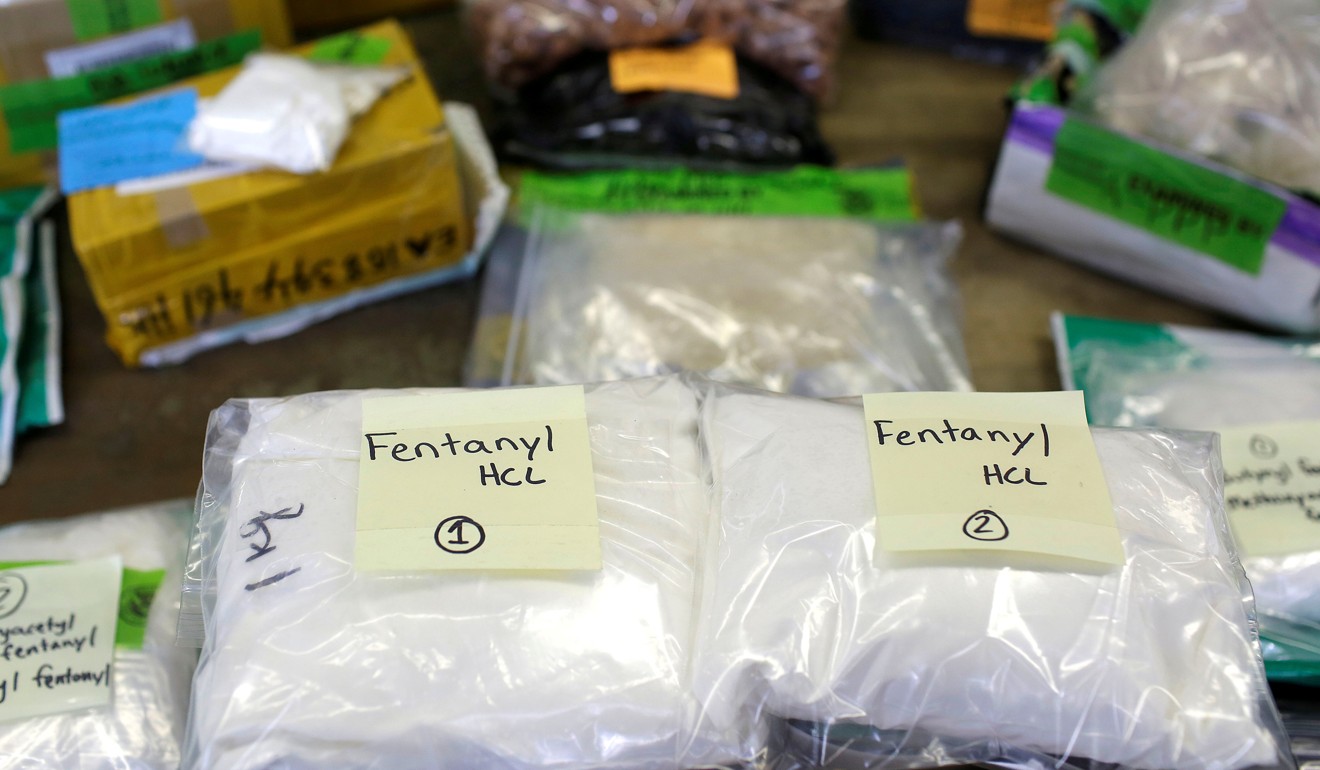
Fentanyl: Chinese authorities face deadly adversary that changes so quickly it defies definition by the law
- Created by chemistry, driven by greed, made in China: it caused 28,500 fatalities in the US last year and its analogues tie narcotics authorities in knots for months
In a race between law enforcement and narco-criminals, chemistry is king and the drug makers have numbers on their side.
Between 2012 and 2015, six fentanyl-related drugs were developed in China for the black market. In 2016, that number was 66, and in the following year 34 more were concocted.
Chinese enforcement agencies cannot get the upper hand when a market expands at such speed and creates drugs that the law takes months to define as controlled substances so they can begin to try to get them off the streets.
War against synthetic opioids must be won
Even with laws in place to control narcotics and tough punishments that include the death penalty, China is outpaced or bypassed by laboratory-produced psychoactive substances such as fentanyl and its analogues.
Fentanyl, 50 times stronger than heroin, and some of its much stronger analogues – drugs that are chemically similar to it – have been blamed by the US Centres for Disease Control and Prevention for 28,466 fatal overdoses last year, about 60 per cent of all opioid overdose deaths in the US.
Cracking down on fentanyl production has been discussed by Chinese President Xi Jinping and his US counterpart Donald Trump several times but they are fighting an uphill battle.
Criminal law in China put widely known drugs such as heroin, opium, methamphetamine and other narcotic and psychotropic substances on the control list which Beijing started in 2005.
So far, 171 psychoactive substances – including 25 fentanyl-related substances – have been put on the control list of Non-medicinal Narcotic Drugs and Psychotropic Substances Management Regulation, which uses international anti-narcotics agreements as reference points.

However, fentanyl is reinvented at such a speed that the law cannot keep up and that damages enforcement, said narcotics experts.
“A change in the molecular structure of the substance can come up with 10,000 related substances, and it’s technically simple to create analogue of fentanyl,” said Wu Jiang, a professor who specialises in narcotics law at Yunnan University in Kunming. Wu is also a legal expert for the National Narcotics Commission.
Newly discovered drugs are reported to the narcotics commission for review, and a committee of experts will make a risk assessment before taking the legal steps to put it on the control list. The process takes months.
There are tens of thousands of factories and workshops in China that can process such chemicals. Some of the people behind those operations will not hesitate to break the law for a huge profit, Wu said.
How China plans to beat the fentanyl chemists
“New substances keep coming up, and the law lags behind. It takes time to study and approve the substance’s addition [to the control list]. It becomes illegal and the amount of that drug [on the street] drops until a new substance is created. The cycle goes on and on.”
The law can be bypassed by supplying precursors, rather than finished products, that can easily be processed into illegal substances. Although precursors are governed by a control list of chemicals, that list is also slow to catch up.
In legal proceedings, precursors can fall through loopholes and make convictions for drug manufacturing and trafficking difficult, especially if the drug is made in China and shipped to customers overseas.
“You need evidence that the suspects committed a crime and that the sentence is reasonable, which is difficult to prove when you cannot connect their substances to consumers overseas,” said Wu.
Court cases demonstrate the legal knots prosecutors have to unravel to try to secure a conviction.

In 2016, Hubei police raided a drugs laboratory run by a chemistry graduate who, at the time of his arrest, had made a profit of 10 million yuan (US$1.5 million), but only 4.5 million yuan of that could be considered proceeds of crime as some of the substances produced were not on the control list.
Zhang Zhengbo, a professor with Huazhong University of Science and Technology who was arrested in 2015 for producing and sending substances that were on the control list to the US and Britain, was jailed for life last year.
He appealed on the grounds that the substances were not on the control lists of some the destination countries and could be used there legitimately as antidepressants.
In May, Hubei Higher People’s Court ruled in favour of his appeal, saying that the prosecution lacked evidence and ordered a retrial. That took place last month, and a verdict is pending.
On top of the legal dilemma, overseas drug trafficking has become increasingly difficult to fight with transactions made online and delivery made by international couriers.
This is a new way of trafficking, leading to 1,499 arrests, nearly five times the number of the year before, according to National Narcotics Commission.
Trump blames China for fentanyl epidemic and wants dealers executed
With this method, traffickers have passed drugs off as tea bags, weight-loss pills, sports supplements or pesticides. Customs officers cannot checking everything that comes their way.
“Unlike traditional drugs such as cocaine, customs have technical difficulty in verifying new psychoactive substances as narcotics,” Wu said.
Tu Guozhang, a forensic expert with Guizhou Police College, explained how hard it was for laboratories to confirm new substances as narcotics.
“They use numerous raw materials and each substance might use different kinds. There is no set procedures and it takes a very long time to confirm they are [illegal] narcotics,” he said.
In other cases, suspects posted online advertisements offering tailor-made drugs then laundered the proceeds in digital currencies, making deals hard for Chinese authorities to trace.

“The demand and supply advertisements in online trading platforms have been purged, so they put advertisements in websites with overseas servers. Collecting evidence has become increasingly difficult,” according to a report by the National Narcotics Commission this year.
In August, two Shanghai residents, Zheng Fujing and his father Zheng Guanghua, were charged in a US federal court in Cleveland, Ohio, for a conspiracy that involved manufacturing and shipping fentanyl analogues to at least 25 countries and 37 states, resulting in the deaths of users.
The charges said the pair laundered drugs proceeds by using digital currencies such as bitcoin, transmitted proceeds into and out of bank accounts in China and Hong Kong, and bypassed currency restrictions and reporting laws.
It is unclear if the father and son are still at large. An inquiry to the National Narcotics Commission received no reply.

